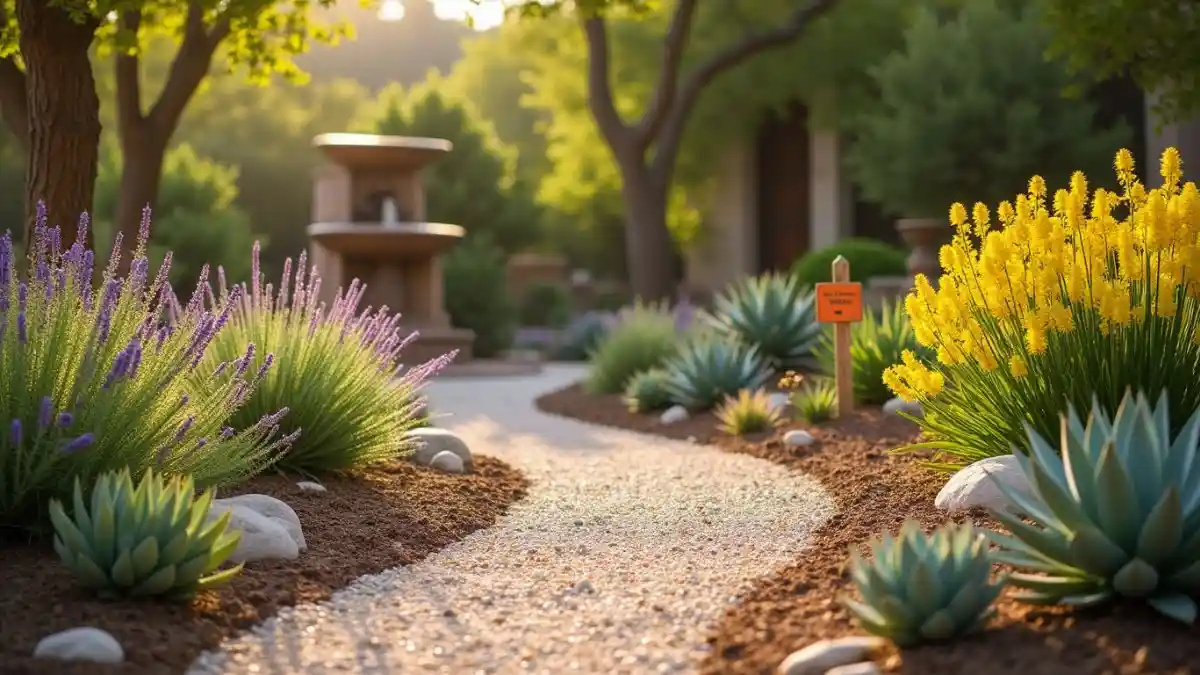Imagine stepping into a lush, vibrant garden that thrives even during San Antonio’s scorching summers—without draining your water bill. Xeriscaping makes this possible, offering a sustainable and beautiful solution for your outdoor space. If you’ve ever struggled to maintain a traditional garden in San Antonio’s climate, you’re not alone. Water restrictions, high utility costs, and the constant battle to keep plants alive during droughts can make gardening feel like an uphill battle. But what if there was a way to create a stunning outdoor space that’s both low-maintenance and water-efficient? That’s where xeriscaping comes in.
In this article, we’ll explore xeriscaping in San Antonio and share seven brilliant tips to help you design a water-wise garden that’s perfect for the city’s unique climate. Whether you’re a seasoned gardener or a beginner, these tips will help you create a sustainable outdoor space that’s as beautiful as it is practical.
Table of Contents
What is Xeriscaping and Why Does San Antonio Need It?
Xeriscaping is a landscaping method that focuses on water efficiency, drought-tolerant plants, and sustainable practices. The term comes from the Greek word “xeros,” meaning dry, and it’s all about creating landscapes that thrive with minimal water. In a city like San Antonio, where the average annual rainfall is around 32 inches and droughts are common, xeriscaping isn’t just a trend—it’s a necessity.
Why Xeriscaping is Perfect for San Antonio
- Water Conservation: With frequent droughts and water restrictions, xeriscaping helps you save water and reduce your utility bills.
- Low Maintenance: Drought-tolerant plants require less care, saving you time and effort.
- Eco-Friendly: By using native plants and sustainable practices, you’re supporting local ecosystems.
- Curb Appeal: A well-designed xeriscape can enhance your home’s aesthetic and even increase its value.
7 Brilliant Tips for Xeriscaping in San Antonio
1. Choose Native and Drought-Tolerant Plants
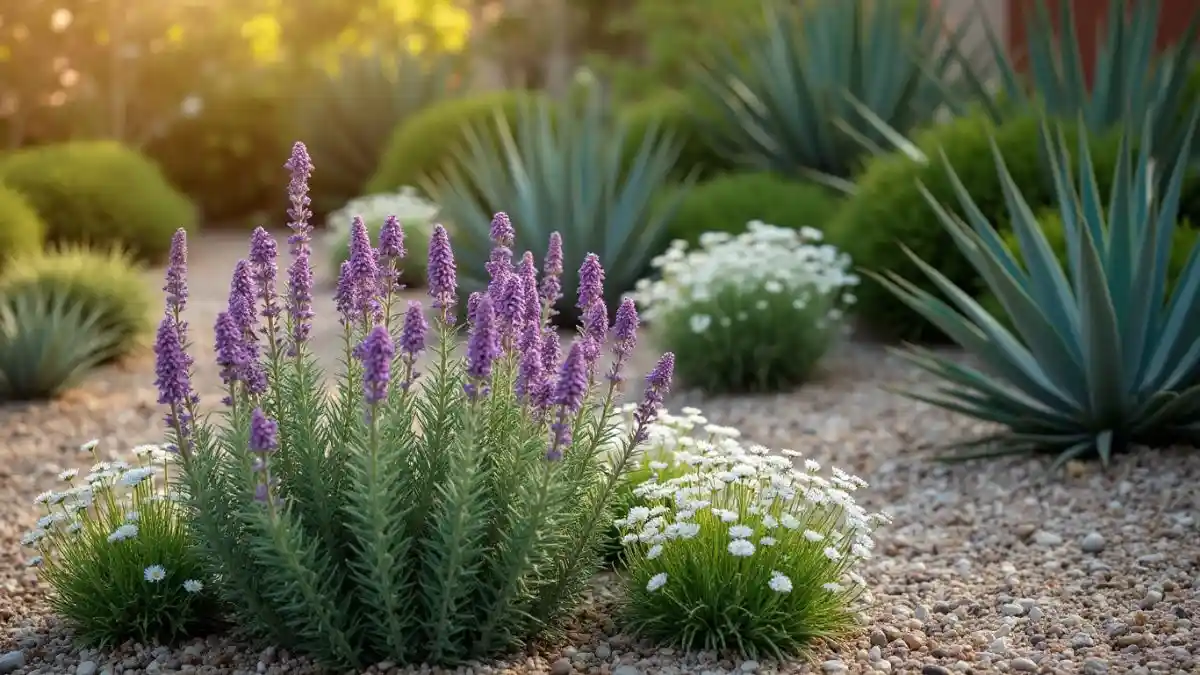
When it comes to xeriscaping in San Antonio, the plants you choose are crucial. Native plants like Texas Sage, Blackfoot Daisy, and Yucca are naturally adapted to the local climate, making them ideal for water-wise gardens. These plants require less water, are more resistant to pests, and thrive in San Antonio’s heat.
Examples of Drought-Tolerant Plants for San Antonio:
- Texas Sage: Known for its vibrant purple blooms and low water needs.
- Blackfoot Daisy: A hardy perennial that adds a pop of white to your garden.
- Yucca: A striking plant with sword-like leaves that’s perfect for adding texture.
Pro Tip: Group plants with similar water needs together to maximize efficiency.
2. Optimize Your Soil for Water Retention
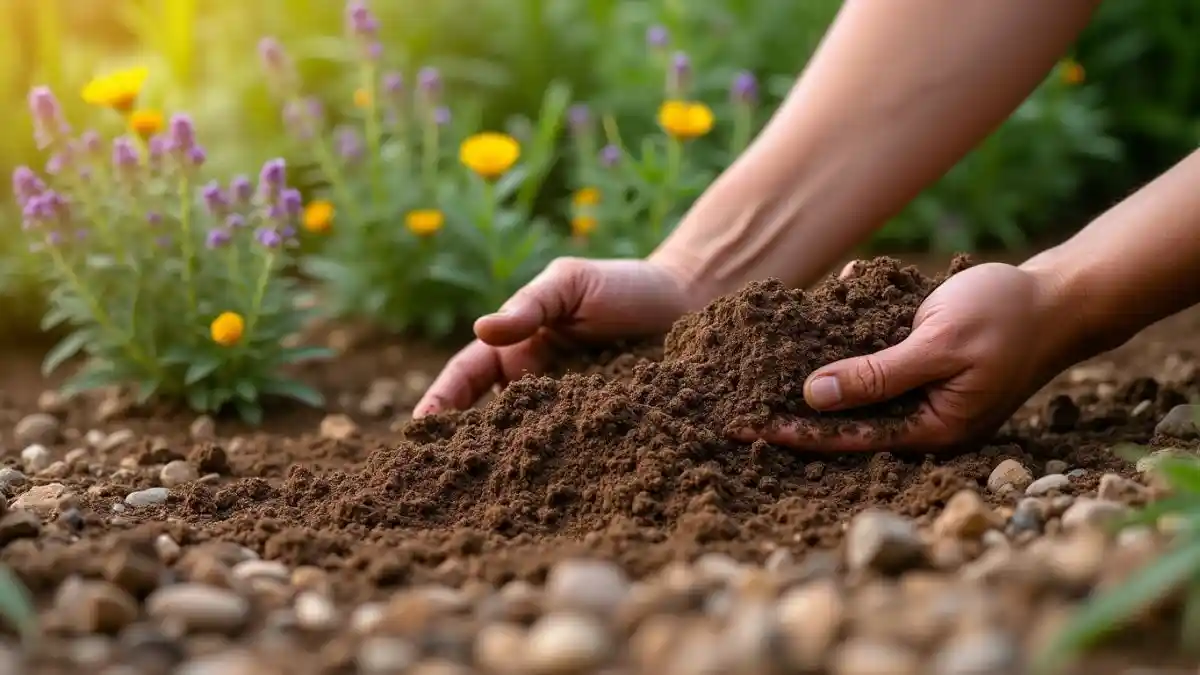
Healthy soil is the foundation of any successful garden, and xeriscaping is no exception. In San Antonio’s clay-heavy soil, improving water retention is key. Start by amending your soil with organic matter like compost, which helps retain moisture and provides essential nutrients. Adding a layer of mulch (such as gravel or wood chips) can also reduce evaporation and keep plant roots cool.
Example: A 3-inch layer of mulch can reduce water loss by up to 50%.
Pro Tip: Test your soil’s pH and drainage before planting to ensure it’s suitable for your chosen plants.
3. Design Efficient Irrigation Systems
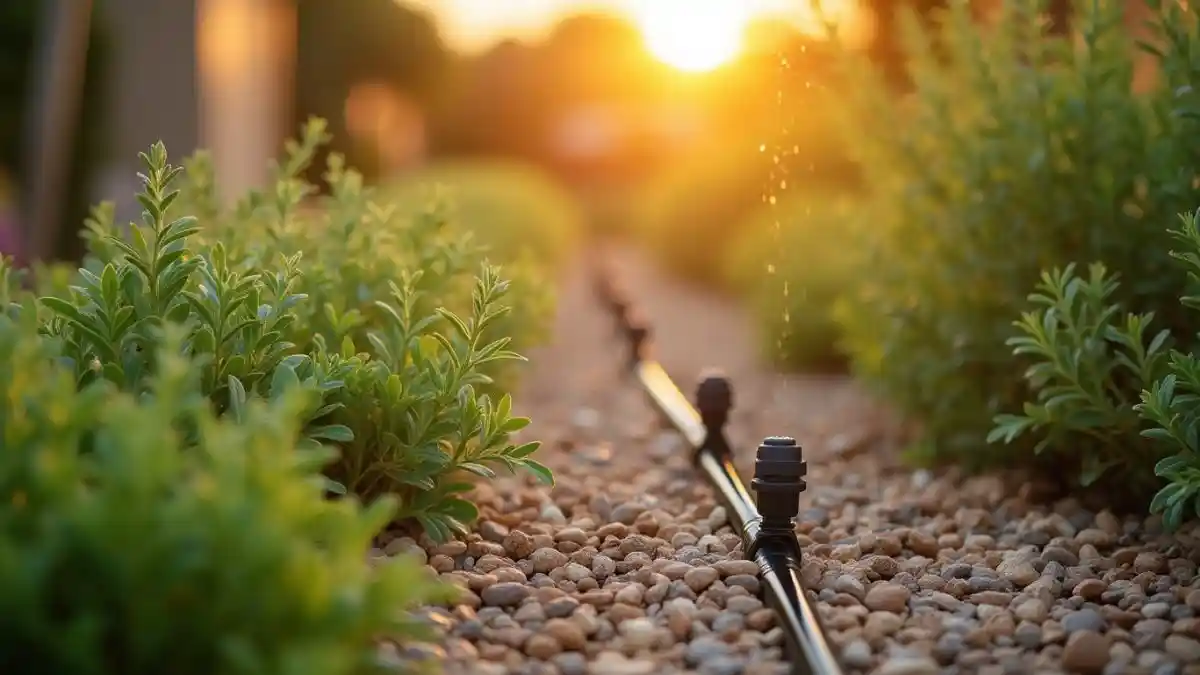
Even in a xeriscape, some watering is necessary—especially during the establishment phase. The key is to water efficiently. Drip irrigation systems are a great option because they deliver water directly to the plant roots, minimizing waste. Pair your system with a smart timer to water during the cooler parts of the day, such as early morning or late evening.
Example: Drip irrigation can reduce water usage by up to 60% compared to traditional sprinklers.
Pro Tip: Group plants with similar water needs together to create efficient watering zones.
4. Incorporate Hardscaping Elements
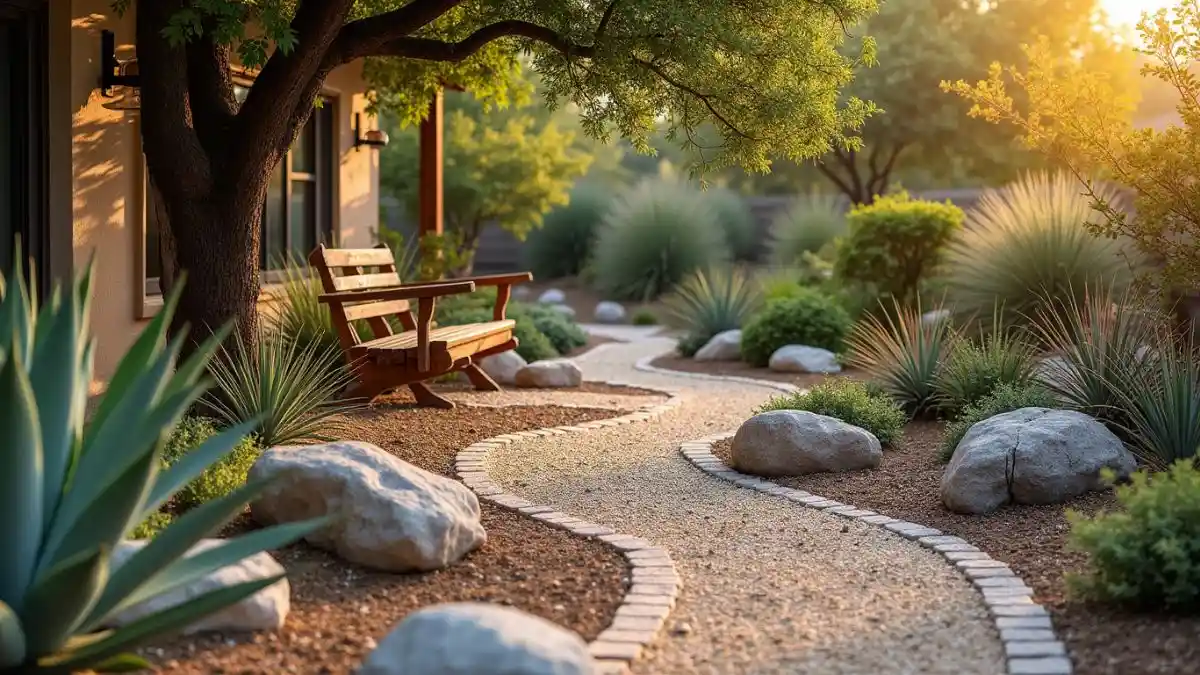
Hardscaping—using non-living elements like rocks, gravel, and pavers—is a great way to reduce the need for water-intensive lawns. Not only do these materials require no water, but they also add structure and visual interest to your garden. Consider creating pathways, patios, or seating areas with drought-resistant materials.
Example: Replace grass with a gravel garden for a modern, low-water look.
Pro Tip: Use permeable materials to allow rainwater to soak into the ground, reducing runoff.
5. Plan for Proper Drainage

Proper drainage is essential for preventing water pooling and ensuring your plants thrive. Make sure your landscape slopes away from your home to direct water flow. You can also use permeable materials like gravel or porous pavers to improve drainage and reduce runoff.
Example: Install rain barrels to capture and reuse rainwater for irrigation.
Pro Tip: Add a dry creek bed to manage runoff and add visual interest to your garden.
6. Use Ground Covers to Reduce Water Loss
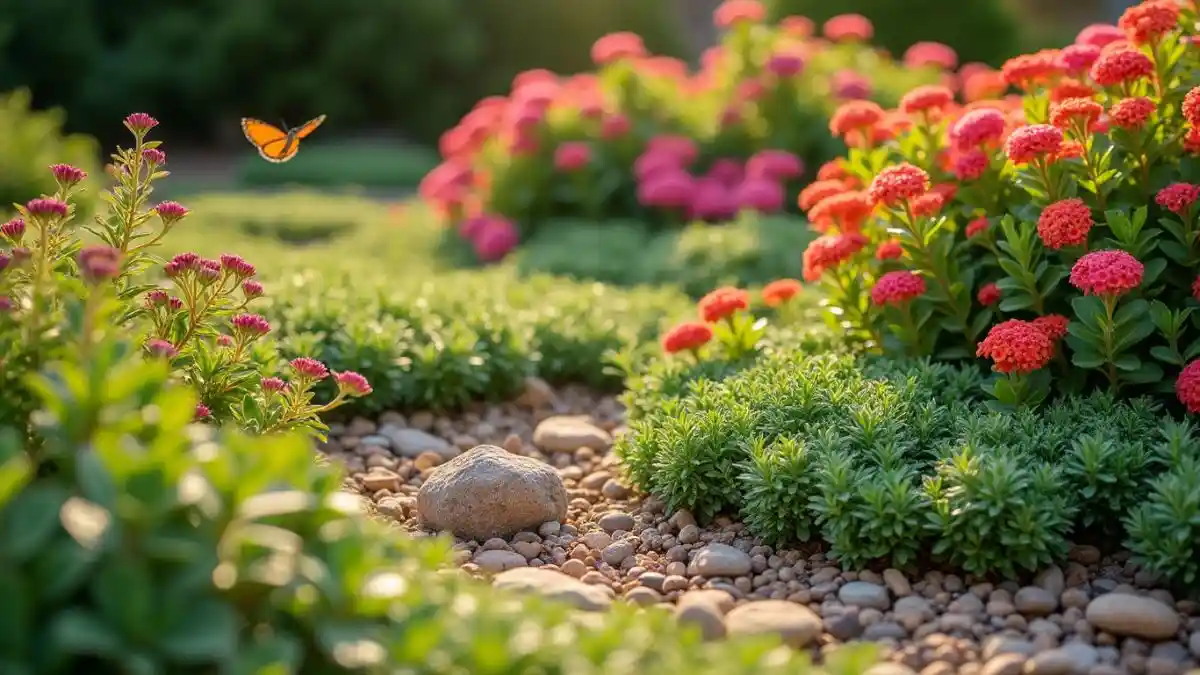
Ground covers like creeping thyme, sedum, or lantana are a great way to reduce water loss and prevent soil erosion. These low-growing plants spread quickly, creating a lush carpet that retains moisture and adds texture to your garden.
Example: Lantana is a hardy ground cover that thrives in San Antonio’s heat and attracts pollinators like butterflies.
Pro Tip: Choose ground covers that complement your overall design and provide year-round interest.
7. Maintain Your Xeriscape Regularly
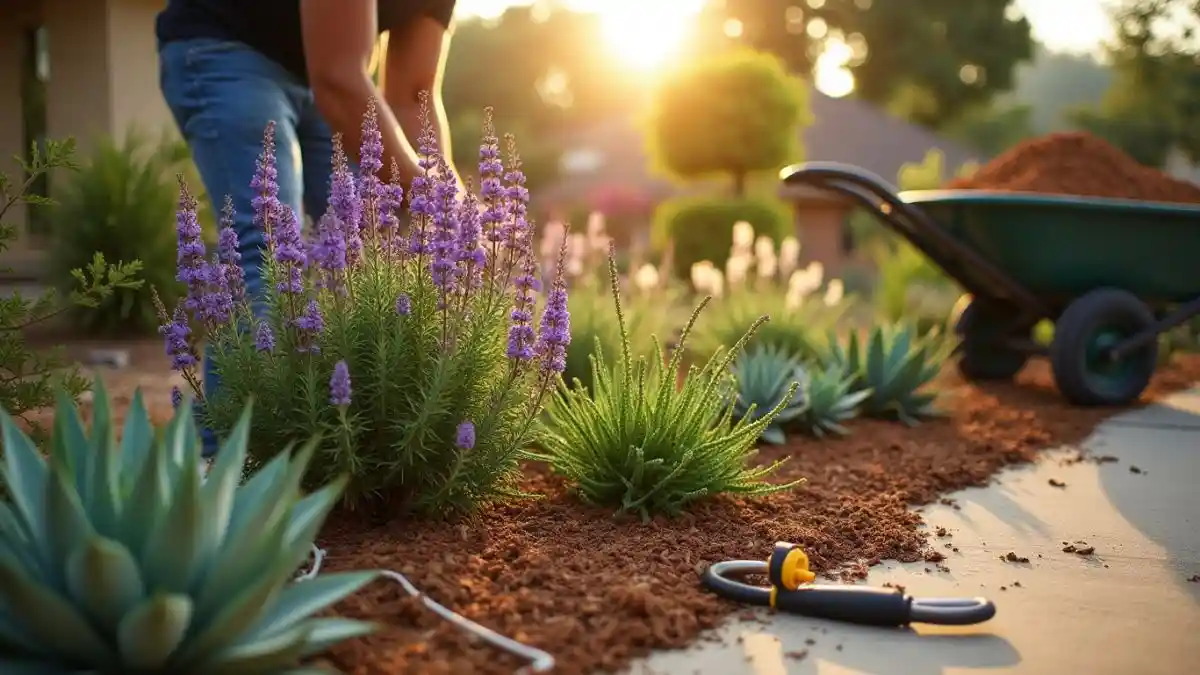
While xeriscaping is low-maintenance, it still requires some care to keep it looking its best. Regularly prune plants to promote healthy growth, check your irrigation system for leaks or clogs, and refresh mulch and soil amendments as needed.
Example: A well-maintained xeriscape can save up to 60% of water compared to traditional lawns.
Pro Tip: Schedule seasonal check-ups for your irrigation system to ensure it’s working efficiently.
How to Get Started with Xeriscaping in San Antonio
Ready to transform your outdoor space? Start by assessing your current landscape and water usage. Create a design plan that incorporates the seven tips above, and consult local nurseries or xeriscaping experts for advice. Don’t forget to take advantage of San Antonio’s water-saving rebates through programs like SAWS (San Antonio Water System).
Pro Tip: Visit the San Antonio Botanical Garden for inspiration on native plants and xeriscape designs.
Frequently Asked Questions (FAQ)
What is xeriscaping in San Antonio?
Xeriscaping is a water-efficient landscaping method that uses drought-tolerant plants and smart design to conserve water, perfect for San Antonio’s climate.
How much water can xeriscaping save?
Xeriscaping can reduce outdoor water use by up to 60%, making it ideal for water-conscious homeowners.
What are the best plants for xeriscaping in San Antonio?
Native plants like Texas Sage, Blackfoot Daisy, and Yucca are excellent choices for xeriscaping in San Antonio.
Is xeriscaping expensive to install?
While initial costs may vary, xeriscaping saves money in the long run through reduced water bills and maintenance.
Can I xeriscape my entire yard?
Yes! Xeriscaping can be applied to your entire yard, from front lawns to backyard patios.
How do I maintain a xeriscape garden?
Regular pruning, irrigation checks, and mulching are key to maintaining a healthy xeriscape garden.
Are there rebates for xeriscaping in San Antonio?
Yes, San Antonio offers rebates for water-efficient landscaping through programs like SAWS.
Can I still have a lawn with xeriscaping?
Yes, but consider reducing its size or using drought-tolerant grass varieties like Buffalo Grass.
What is the best time to start xeriscaping in San Antonio?
Fall or early spring is ideal, as cooler temperatures help plants establish roots.
How do I design a xeriscape garden?
Start by assessing your space, choosing native plants, and planning efficient irrigation. Consult local experts for guidance.
Conclusion: Create Your Water-Wise Garden in San Antonio
Xeriscaping in San Antonio isn’t just a landscaping trend—it’s a practical, sustainable solution for creating a beautiful outdoor space that thrives in the city’s unique climate. By following the seven brilliant tips outlined in this article, you can design a water-wise garden that not only saves water but also reduces maintenance, supports local ecosystems, and enhances your home’s curb appeal. Whether you’re looking to transform your entire yard or simply add a few drought-tolerant plants, xeriscaping offers endless possibilities for creating a stunning and sustainable outdoor space.
Your Next Steps
Ready to get started? Here’s how you can begin your xeriscaping journey:
- Assess Your Space: Take a look at your current landscape and identify areas where you can reduce water usage.
- Plan Your Design: Use the tips in this article to create a design plan that incorporates native plants, efficient irrigation, and hardscaping elements.
- Consult Local Experts: Visit nurseries or consult with xeriscaping professionals to get advice on plant selection and design.
- Take Advantage of Rebates: Check out programs like SAWS (San Antonio Water System) for rebates and incentives on water-efficient landscaping.
Final Thought
Xeriscaping in San Antonio is more than just a way to save water—it’s a way to create a beautiful, sustainable outdoor space that you can enjoy year-round. Whether you’re a seasoned gardener or a beginner, these tips will help you design a garden that’s as practical as it is stunning. So why wait? Start your xeriscaping journey today and transform your outdoor space into a water-wise oasis.
Ready to take the first step? Explore local resources, visit nurseries, and begin planning your xeriscape garden today. Your dream outdoor space is only a few steps away!


